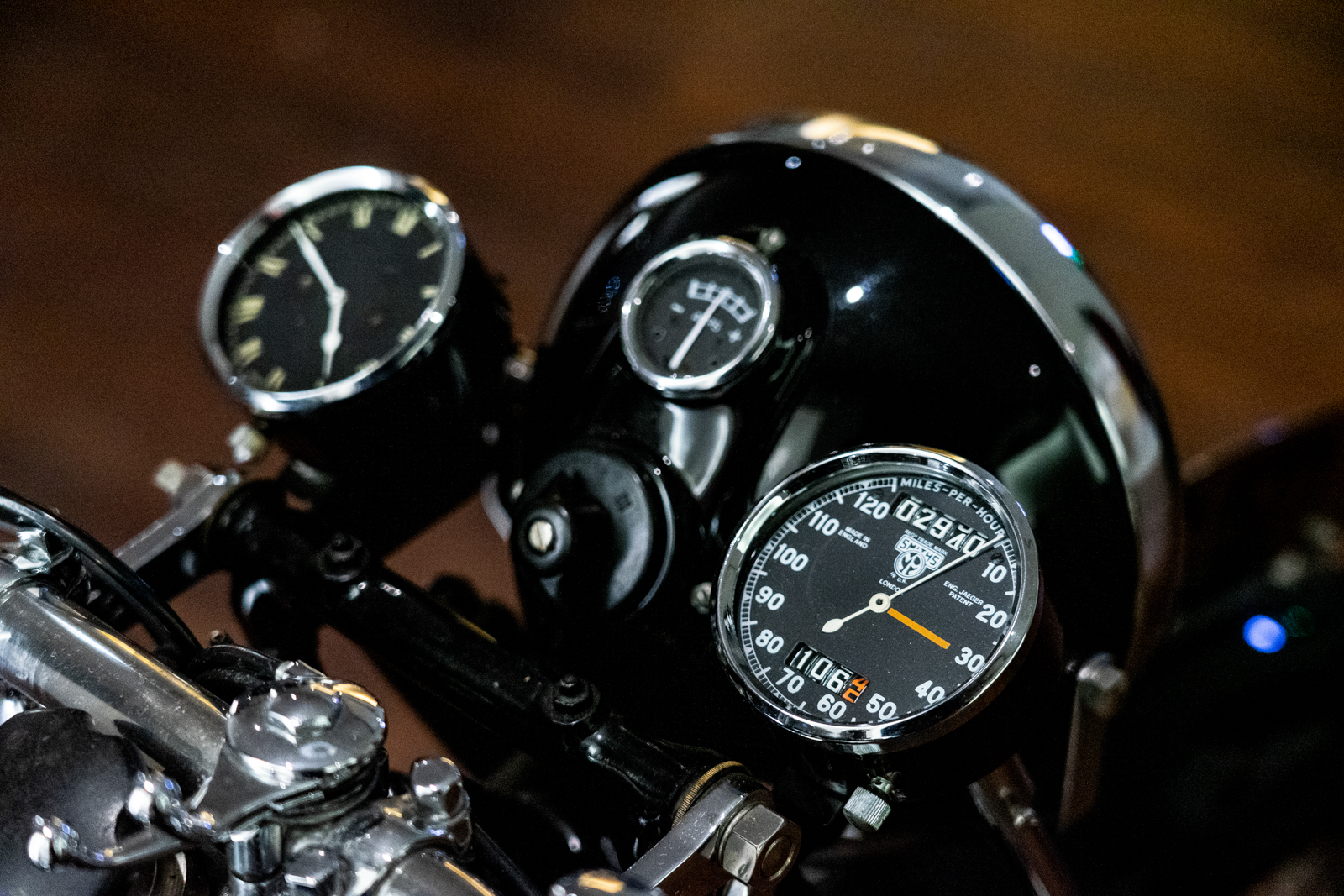After a long hibernation, the bikers swooped into East Vancouver on blatting Harley-Davidsons, pannier-clad BMWs, or small-displacement Japanese stalwarts, no two alike. Behind graffitied glass, the open-plan building hosting BC’s newest motorcycle exhibition buzzed like an art show. And there was plenty of art to see, hanging on the walls, inked onto skin, or wrought in steel, glass, and rubber.
The crowds at the Ace Moto Show were there every day, and a waitlist formed for fabricators and collectors eager to show off their steeds. A collaboration between the motorcycle-themed Burnout Café and the nearby Last Caress motorcycle shop, the Ace show—three days in January—filled a need for those who ride.
The stereotypical biker bar is the place an action-movie protagonist walks into right before the fists start flying. Motorcycling café culture is completely different. The Ace show, which springs from the mind of Burnout Café founder and Narrow Group owner David Duprey, takes its name from the most famous motorcycling hangout of them all.
The Ace Café still exists on its original site in Wembley, England, just off the North Circular Road that rings London. Established in 1938 as a simple egg-and-chips diner, it was open 24 hours a day. Roaming the empty highways late at night, bikers started showing up. But then the Blitz arrived, and in 1940, the Luftwaffe smashed the Ace to smithereens.
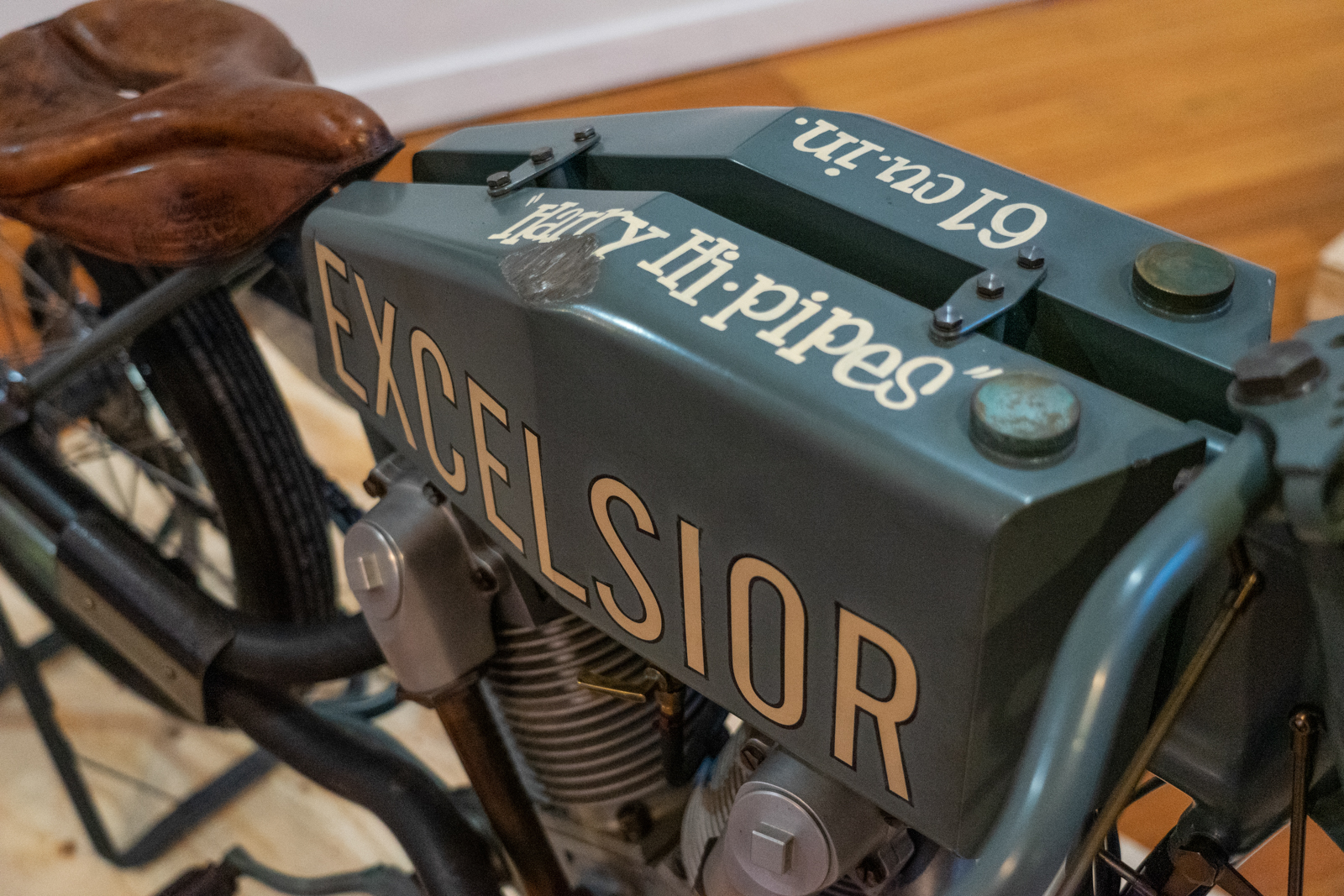
It was rebuilt in 1949, just in time for the rock ’n’ roll craze to hit the U.K. Long before England returned the favour with the British Invasion of the mid-1960s, American rock ’n’ roll culture gripped youths across the Atlantic. Right at the heart of the music was the motorcycle.
While the Ace was the main hangout, there were transport cafés scattered all along the main motorways of the U.K. Late at night, riders would sprint between them, competing for bragging rights. “The ton,” or 100 miles per hour, was the goal, and these late-night racers became known as ton-up boys. But they were also called the café racers.
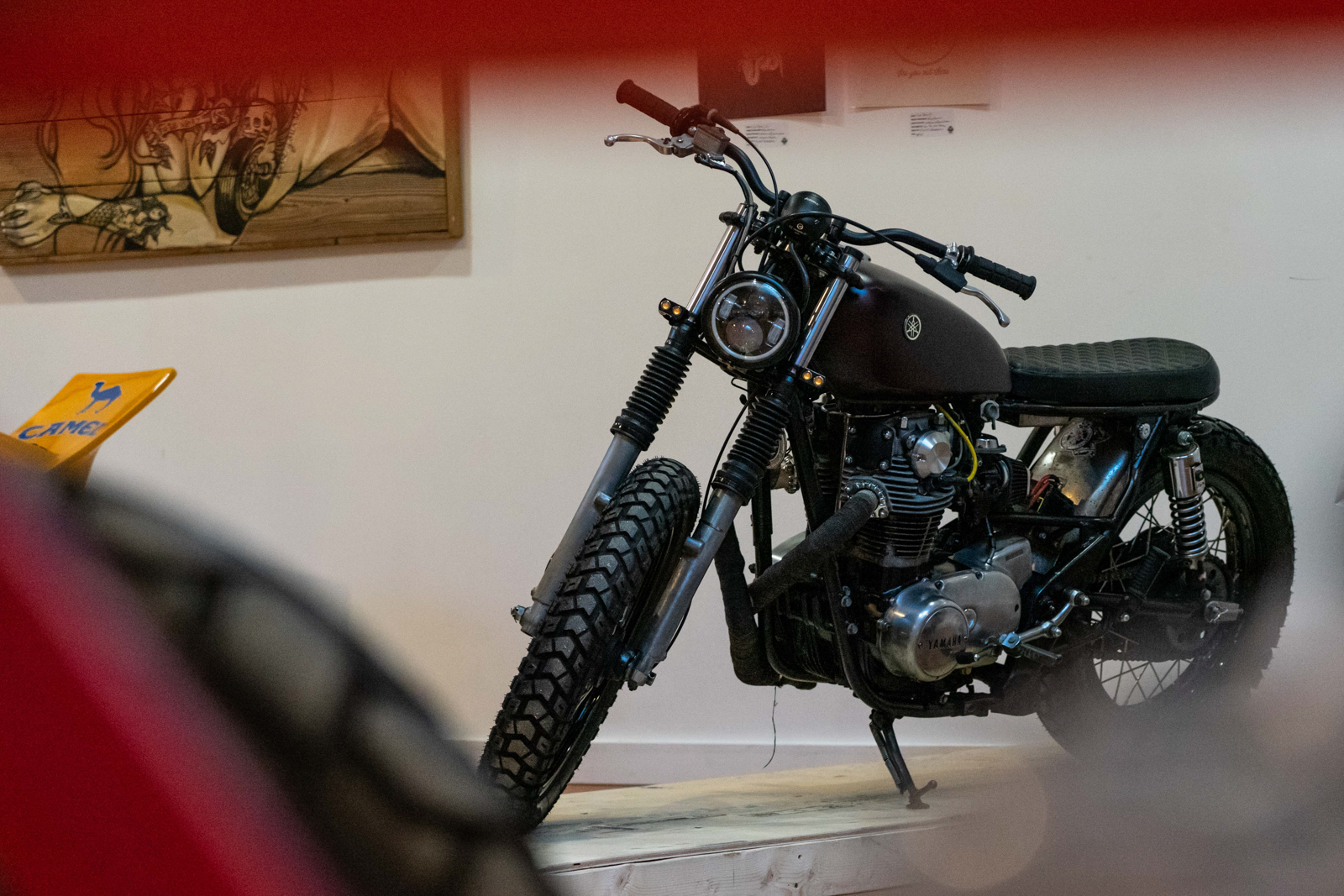
In current motorcycle parlance, a café racer has a specific definition, and it is an object rather than a person. In those early days in the U.K., riders customized their motorcycles for speed, and form followed function. The bikes, usually a Norton or a Triumph, were stripped of all unnecessary weight. The handlebars were lowered so that the rider could hunch low over them, reducing drag. Later, riders dropped more powerful engines into lighter frames, creating the same hybrid monsters that the hot-rodders of Southern California built as cars.
A modern café racer motorcycle has a certain style and a vintage look. While the originals were all British bikes, it has become popular to infuse readily available Japanese bikes with the café style. You can even buy what Honda terms a neo sports café motorcycle brand new, with the CB300R, CB650R, or CB1000R. These are modern bikes with LED lighting and anti-lock brakes, but with the round-headlight look of a café racer.
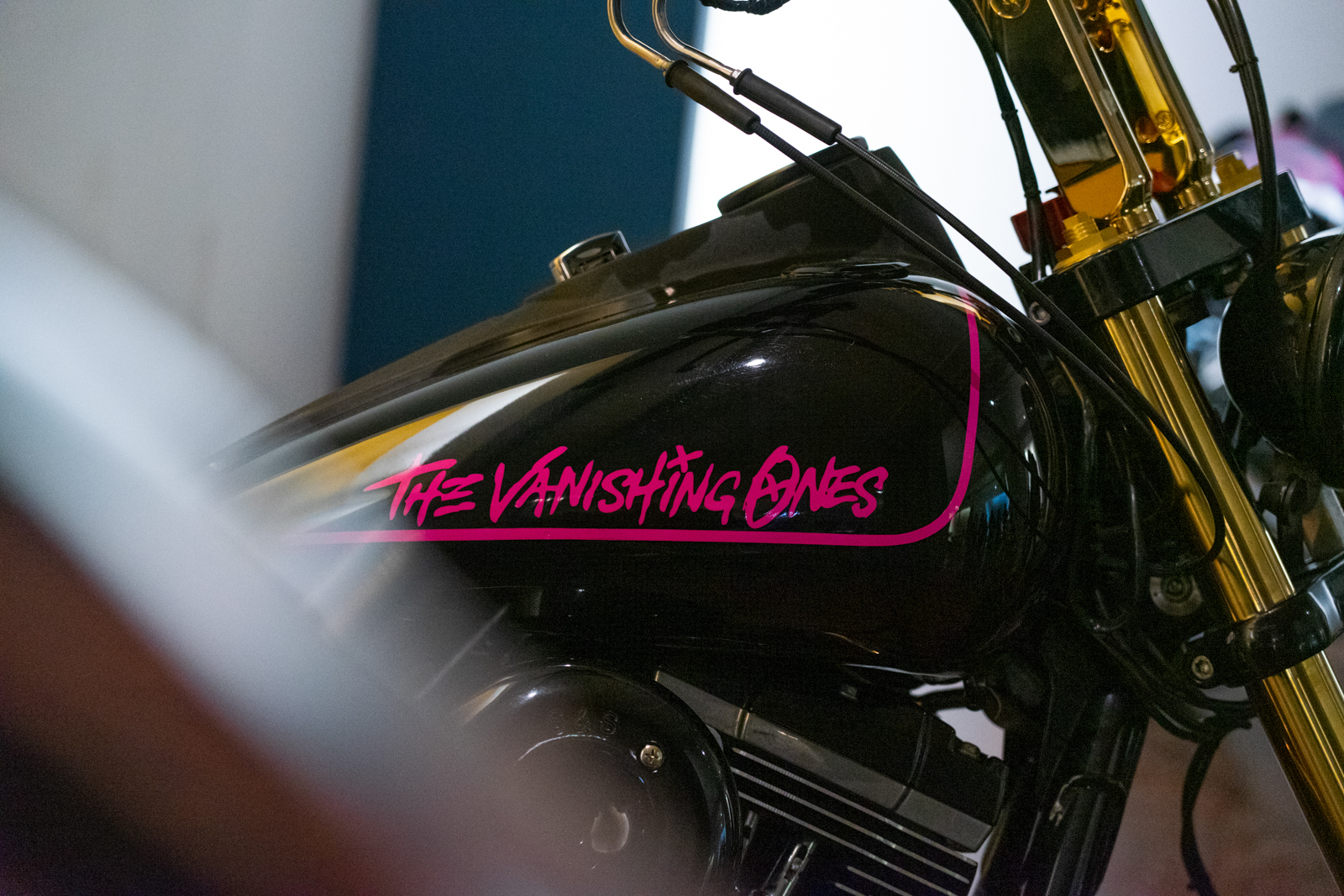
Just as the rules of what constitutes rock ’n’ roll have changed over the decades, so too has the definition of a café racer. At one time, you picked the motorcycle you were interested in and stuck to it: a big V-twin Harley-Davidson, a screaming-fast Japanese sportbike, or a mud-spattered motocross bike. The Ace Motor Show breaks down these walls.
“It’s just the creativity that’s surprising,” says show cofounder Adam Yoshio of Last Caress, while business partner Nik Dean nods. “There’s almost a vulnerability to it,” Dean adds.
There are bikes here that would fit the bill of café racer, but there are also actual racing bikes: a streamlined Triumph that set land-speed records at the Bonneville Salt Flats, a number of Harley-Davidsons set up for stunt riding, and some svelte vintage Ducatis. There’s even a scooter done up in Camel tobacco racing livery.
With a long riding season and a blend of cultures, the Lower Mainland has a broad array of motorcycling enthusiasts. But if you ride up the Sea-to-Sky Highway on a sunny summer’s afternoon, a biker coming the other way will often raise a hand in acknowledgement.
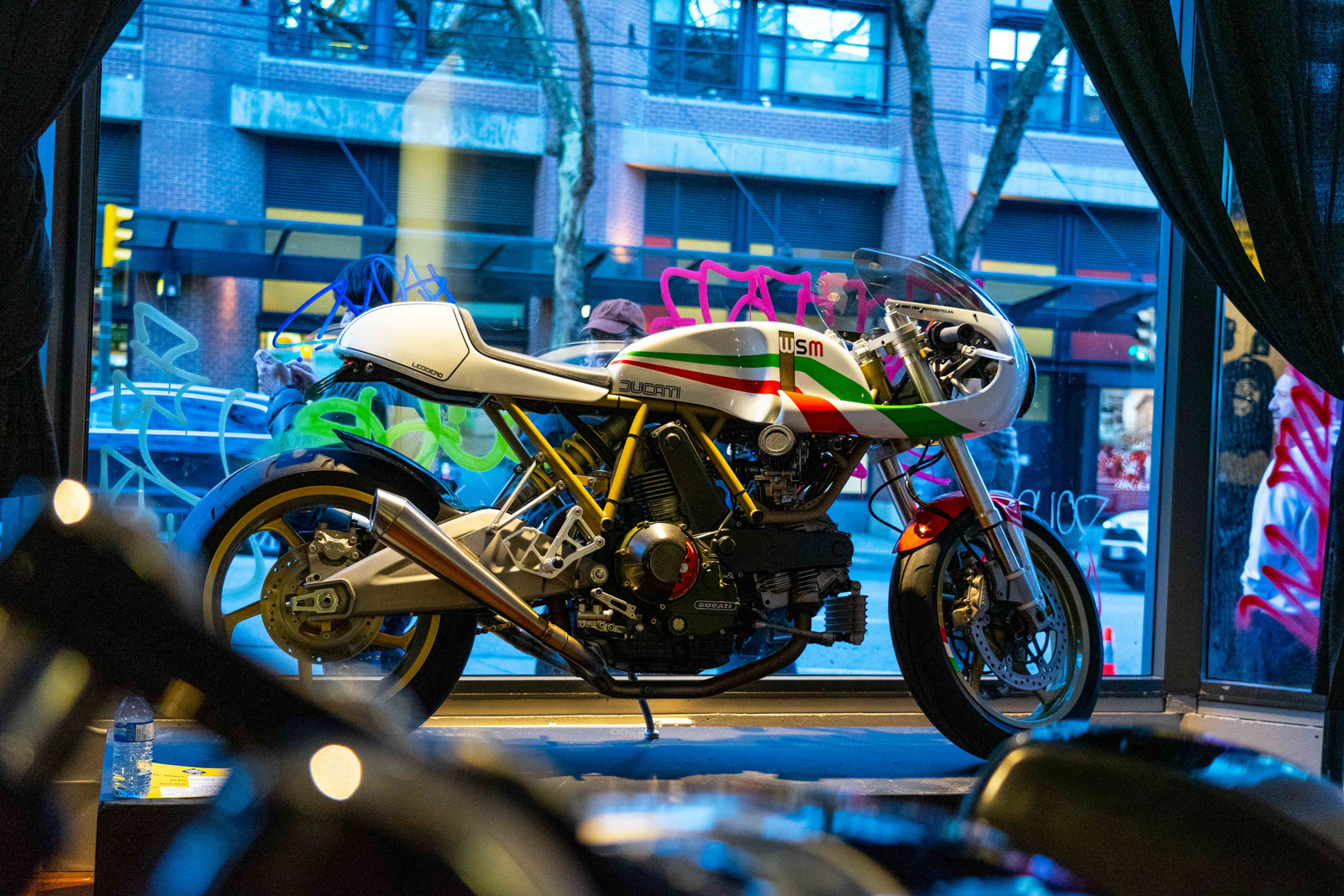
Or if you stop for coffee and fuel, there’s always time for a chat. There’s a commonality in riding. In a car, you’re caged in steel. On a bike, you’re set free. It’s easier to make new friends.
The Ace Moto Show embraces this same feeling. The show, along with the Last Caress and the Burnout Café, has built a welcoming church for those who worship at the two-wheeled altar of speed. It doesn’t matter what you ride, only that you’re a fellow rider.
Read more Transportation stories.

